My name is Libby and am the manager at Peak Fitness. I have been climbing for over 10 years and after spending 2 years on the ground floor of a climbing gym, I wanted to share my own experiences and explain the reasons for why we belay the way that we do.
Belaying is a term used to describe taking in slack, while a rock climber is moving upward. This technique has evolved over hundreds of years and now is widely taught in climbing gyms all over the world. As climbing has become more accessible, a standard for safety techniques has become a necessity. I have had the privilege teaching and tweaking belay techniques for a few years now and I can attest to the importance of a standardized environment. Unlike rock climbing outside, climbing gyms bring together all ability levels. You have climbers that have been climbing for 20 years, and those who have just started. As a community, it is important to work together to promote safe practices and be examples to those who are learning. I wanted to bring up a few points on why we belay the way we do at Peak Fitness.
What method do we use?We teach the P.B.U.S. method. This is the method taught by many guide certification organizations nationwide (American Alpine Club, Climbing Wall Instructor, etc., and makes use of maximum friction and the belayers strongest body positions.
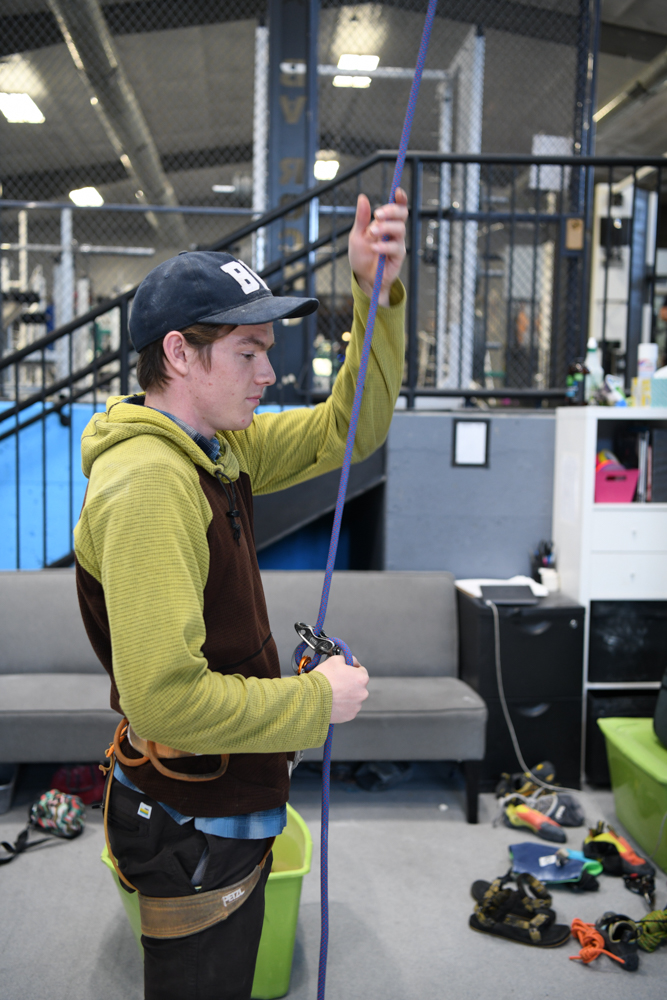
P– The first movement is Pull. The belayer pulls down with his or her guide hand (non-dominant hand), and pulls up with the dominant hand. This is the act of taking in slack.
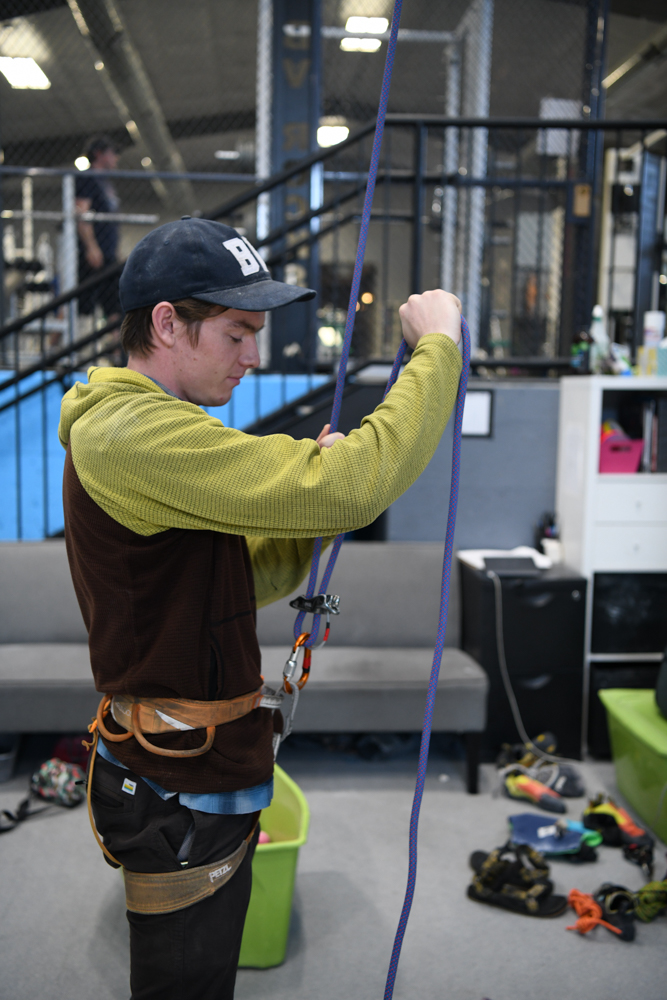
B-The belayer then transitions into the Break. This is the most important position in the belay. This engages the strongest friction position in the belay device. The belayers’ dominant hand is down below the belay device, near the belayers waist. This position is also the transition point.
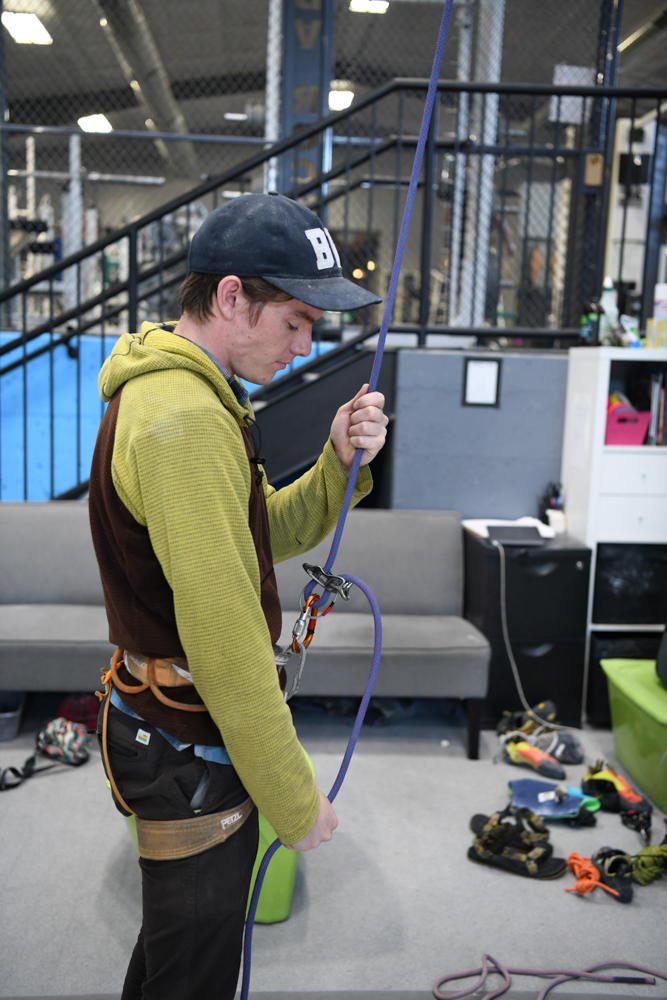
U-At this point, the belayer is still in the break position. The guide hand leaves the upside of the rope and joins the break side of the rope Underthe dominant hand. Two hands are better than one!
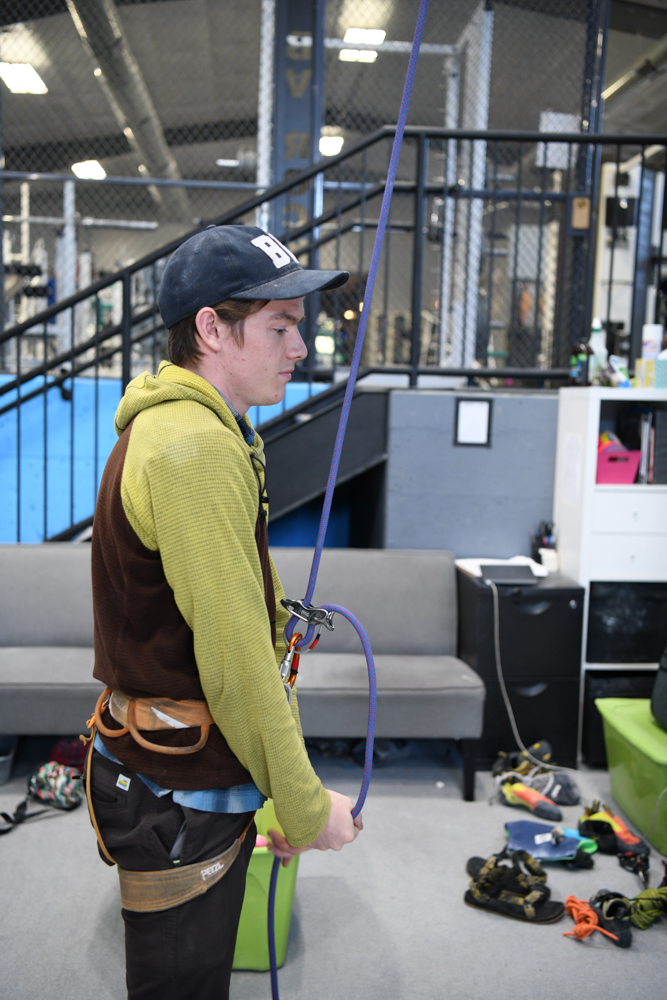
S-This part of the belay is called the Slide. Instead of taking the break hand off the break strand of the rope, the belayer will slide their dominant hand back up to the device. This is important because it allows the dominant hand to start the process over, without letting go of the rope.
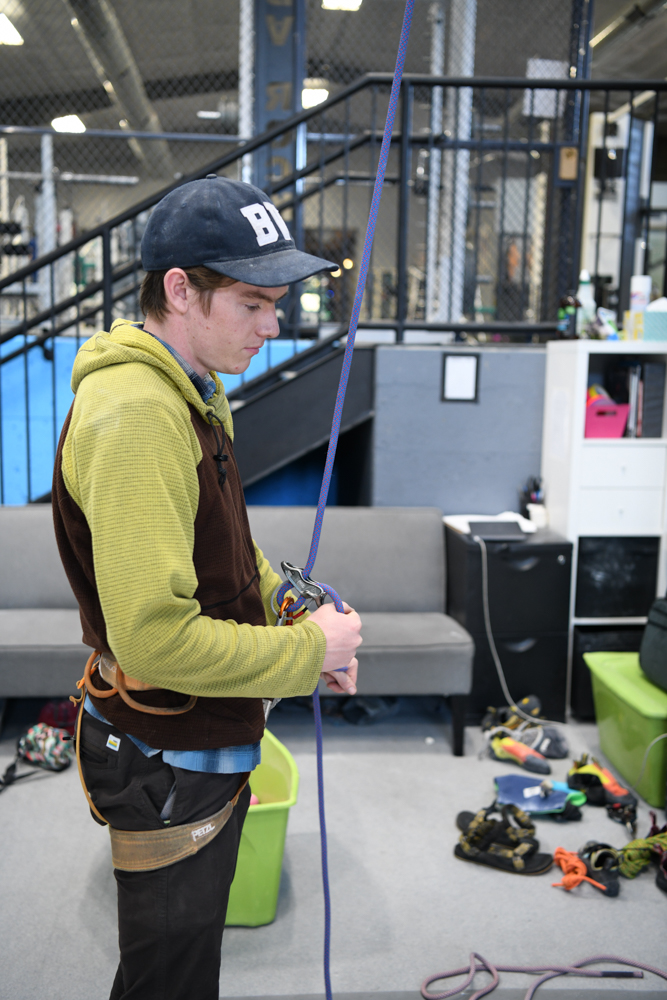
After teaching this method for over 10 years, here are a few reasons that I, personally stand by it:
The hand positions are such that the body/arm positions are strongest. Our guide hand (the upper side of the rope), is positioned with the thumb up. This means that when the belayer pulls down, the shoulder is not internally rotated. Internal rotation (thumb down), loses a significant amount of strength and can exacerbate, or create, injuries in the shoulder.
The break position is made stronger by two things: by having the belay arm under compression and by being closer to the center of gravity. I will analyze this by comparing this to an older, less efficient belay method, commonly known as slip, slap, slide. This method has the transition zone up by the belayers head, not down by the waist. Simply, by having the hands farther away from the body (in front of the face), this decreases the strength of the arms. It also means, that if a climber falls in that transition zone, the belayer must thentransition into the break. Whereas, in the PBUS method, the belayer is already in the break, closer to the center or gravity, and closer to the body (under compression).
Belaying has changed over my lifetime and it will probably change again. I learned the slip, slap, slide method as a teenager and I had to undergo changing my technique. I know that sometimes, making sudden changes to old habits, causes confusion and can create dangerous situations. However, I will not teach or promote a less efficient, less strong belay method if I know a better one is out there. With the influx of more climbing gyms, the safety dynamic is different. When you are climbing outside, you are responsible for yourself and are not obligated to adhere to specific regulations. However, when climbing inside, the staff members and businesses take on a certain amount of risk to allow climbers to come in and play. As a staff member, I would like to do everything in my power to make sure an accident does not happen. If I see a less efficient way of belaying, it’s my responsibility to make the belayer aware. As a community, let’s always strive to be better and ask questions for those who follow our leadership.
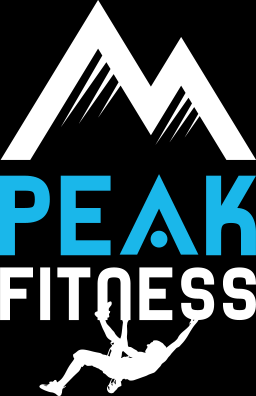
Recent Comments